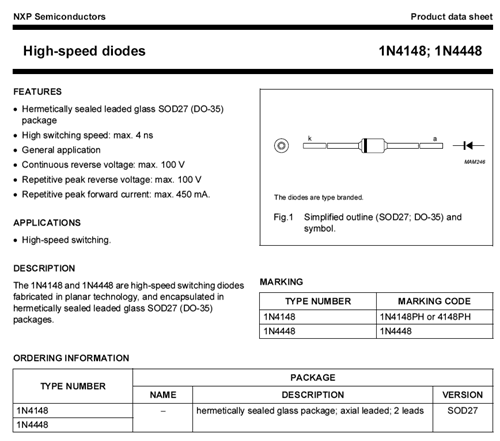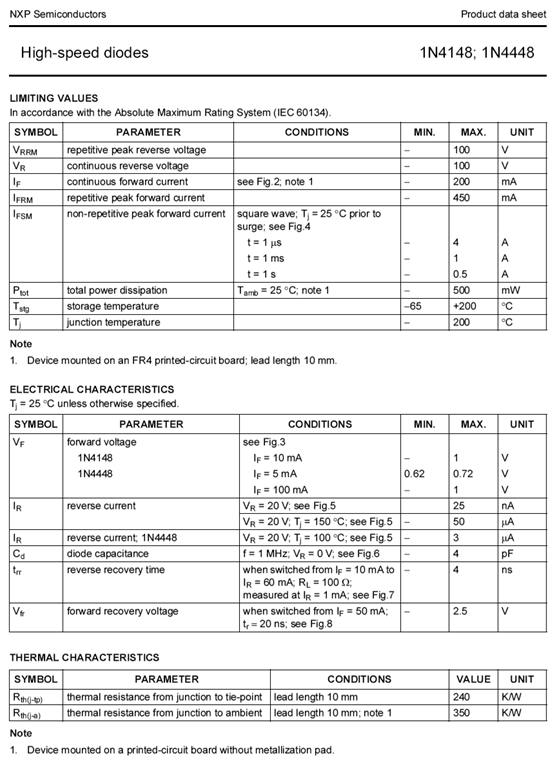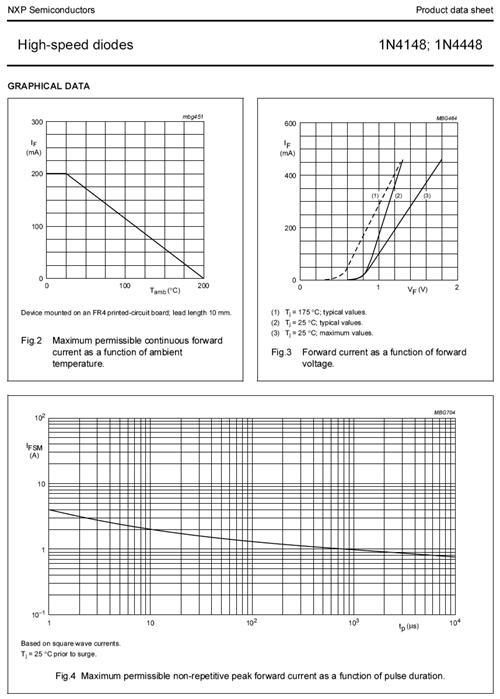2.3: Diode Data Sheet Interpretation
- Page ID
- 25384
A data sheet for the popular 1N4148 switching diode is shown in Figure \(\PageIndex{1}\). The 1N4148 is designed for high speed operation required in high frequency signal applications but also finds use in a variety of general purpose applications that do not require very high current or power handling.
Some of the key features include a four nanosecond switching speed, a maximum reverse voltage of 100 volts and a 450 milliamp maximum forward current (with short single pulses as high as four amps being possible). Power dissipation is 500 milliwatts.
Referring to Figure \(\PageIndex{1b}\), the variation in reverse current with regard to temperature is obvious. This also verifies the “doubles every 10 C\(^{\circ}\)” rule-of-thumb.

Figure \(\PageIndex{1a}\): 1N4148 data sheet. Courtesy of NXP Semiconductors.

Figure \(\PageIndex{1b}\): 1N4148 data sheet (continued).

Figure \(\PageIndex{1c}\): 1N4148 data sheet (continued).

Figure \(\PageIndex{1d}\): 1N4148 data sheet (continued).
Power derating and permissible pulse amplitudes can be seen in Figure \(\PageIndex{1d}\). Finally, note the variation in the forward voltage curves due to temperature. As stated previously, for a given current, an increase in temperature results in a lower forward voltage. Also, at room temperature, we see a knee voltage of approximately 0.7 volts.


